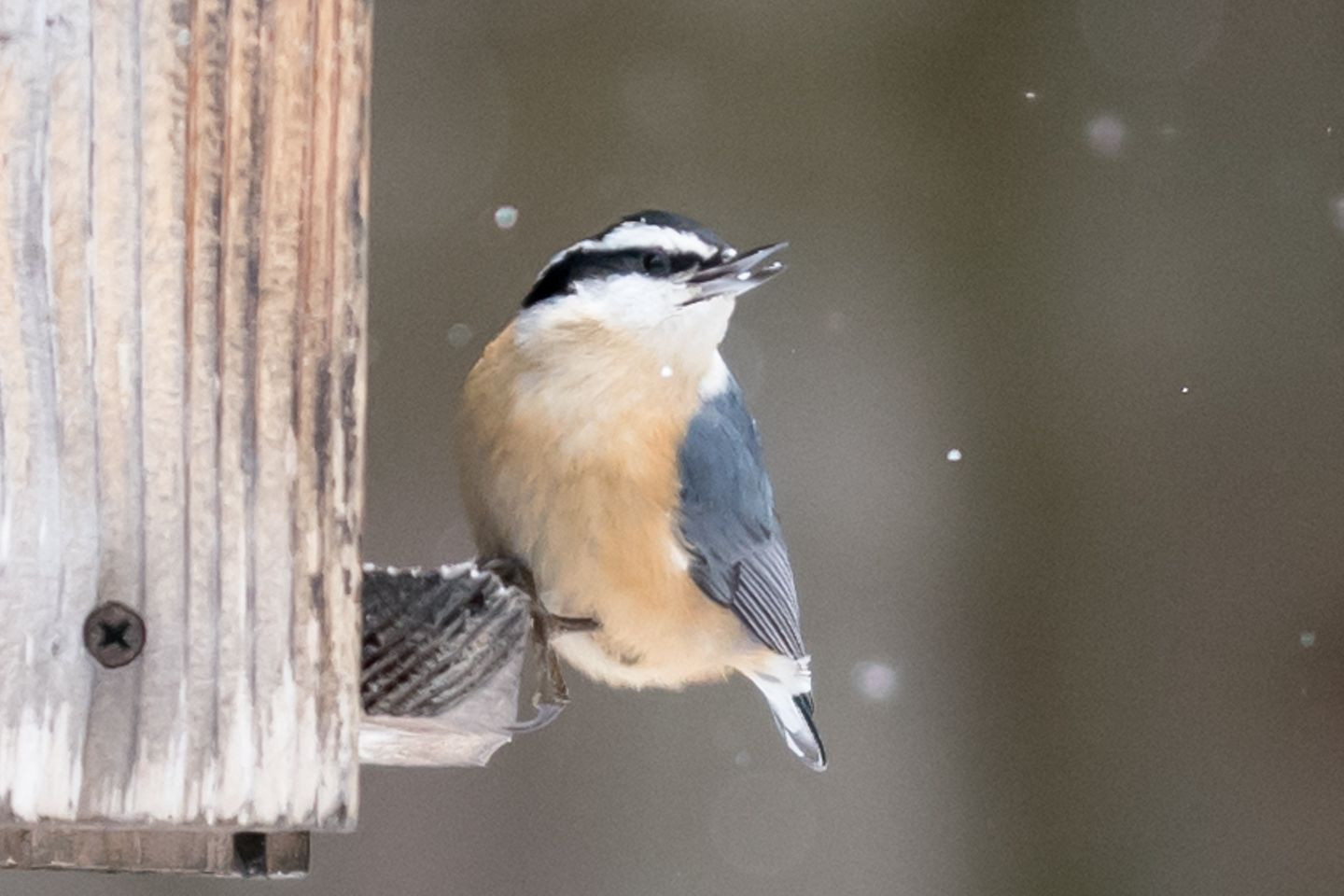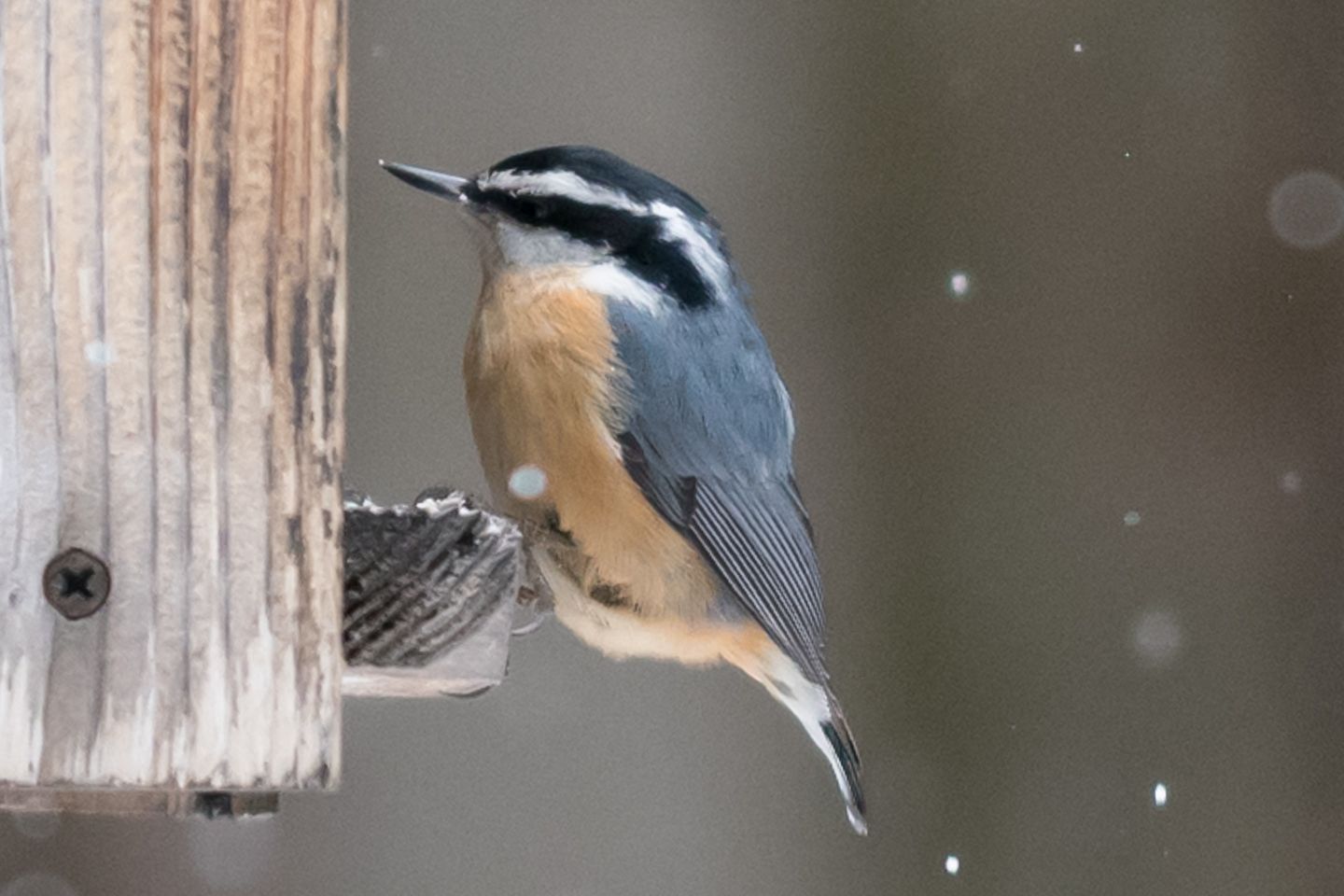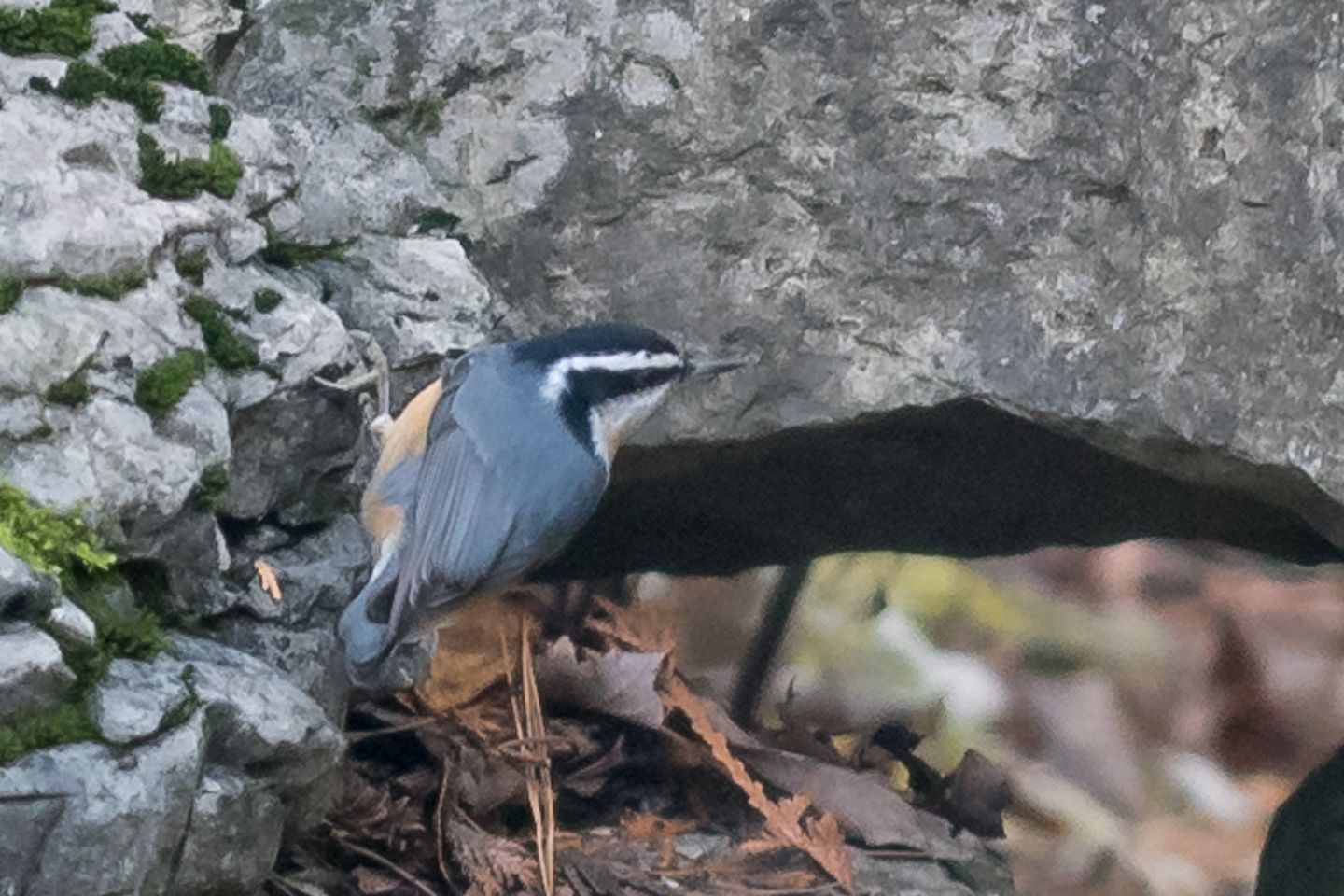The Red-breasted Nuthatch, cousin of our familiar and mostly resident, White-breasted Nuthatch, are coming south. In fact, many northern individuals are already here, and some have passed well to our south. A major irruptive flight of these Boreal Forest conifer dwellers is well underway, and by the time this article is published, the migration will be mostly over. Every two to three years, this species moves south in large numbers. In 2020 this irruption began in early August, as is usual for this species. Migrants have been reported in numbers well down the Atlantic coast, at least to Virginia. This movement extends west to at least the Rockies, thus covering a large proportion of the North American continent. It also appears that northern populations of its usually non-migratory cousin, the White-breasted Nuthatch, are also moving south in considerable numbers.

Bird irruptions amongst northern seed-eating species are driven by fluctuations in reproductive success and food crops. Irruptions of the usually more sedentary White-breasted Nuthatch are much less regular and seem to exhibit no pattern. Such cyclic events amongst northern seed-eating species are driven by fluctuations in reproductive success and food crops. Poor summer seed crops and fall to late summer food scarcity in the boreal forest are the major factors in causing these irruptions. When their food source of conifer seeds fails, they must emigrate or starve. The fall and winter of 2020 is such a situation. There were Red-breasted Nuthatches appearing on the Atlantic coast barrier beaches and in New York City’s Central Park in early August, indicating a severe food shortage developing on the breeding range up north.
Detecting these irruptions in the St. Lawrence River Region is difficult initially, as small numbers of Red-breasted Nuthatch breed in many areas. The best places to note early movements are on small islands and along the barrier beaches of Lake Ontario. It is likely this year’s flight will continue until mid-October when most individuals have reached wintering sites. As is normal with these forced emigrations, many individuals will not survive to return to their breeding areas. Those that do will be part of a population level that puts less pressure on available resources. As resources once again increase, the survivors will enjoy enhanced breeding success. The population will then grow, and the natural cycle of this species will continue as it has for millennia.
The Red-breasted Nuthatch’s range includes most forested regions of Canada and the United States. They are absent from much of Florida and parts of the American Southwest. During these major irruptions, they often occur at locations where few are present in non-flight years. Red-breasted Nuthatches are generally absent from Mexico. Their larger White-breasted cousin has a more southerly range extending from southern Canada to south-central Mexico. This species is resident over most of its range with pairs defending territories against others of their kind year-round. We know little of the dynamics of their much rarer irregular fall irruptions. Also, far less is known of the spring movements of both species when survivors return north. Flights have been observed along the Great Lakes as both species migrate, at least partially, during daylight. I have seen movements in the 50-200 per day range at the Derby Hill Bird Observatory of Onondaga Audubon, located near the southeast corner of Lake Ontario

These large irruptions offer birders wonderful opportunities to enjoy these marvelously, entertaining little birds in a setting far different from our feeders. Watching singles or small groups of nuthatches fly by, along shorelines and over ridges, makes one wonder how their bounding flight can be suited to covering many miles. But cover miles they do, as much as 2000 or more during irruption flights. Such a distance that would do Red-tailed Hawks and Bald Eagles proud.
Once the Red-breasted Nuthatch reach suitable wintering sites, their high pitched “yank yank yank” call reverberates through the landscape. Found almost exclusively in conifers, any location that has such trees will usually do. If you have a well-stocked bird feeder near conifers this bird’s presence during invasion years is virtually guaranteed. Except for much of Florida and other very southern locales they could be found in 2020-2021 pretty much anywhere a wintering
River Rat may be present. They will beat a path to your black oil sunflower seeds and partake of your suet with enthusiasm of a forlorn wanderer seeking survival resources. Even in northern and central Florida, River Rats should keep an eye open for this northern visitor amongst the resident White-breasted Nuthatches at your feeder. If Snowy Owls can show up occasionally on Florida beaches, Red-breasted Nuthatches in pines near well-stocked feeders are not out of the question.

As with the White-breasted Nuthatch, one can tell adult male Red-breasted from females and young. The former have a darker blue/black cap while the cap is a paler blue-gray in the latter. Given the size of the current irruption it’s likely that Summer human denizens of our River may be entertained by this sprite of the North Woods from Gananoque to Georgia. If you do have these birds at your feeder their antics can provide endless hours of entertainment. So sit back and enjoy our northern visitors for once they leave it will be two to three years before the next cohort returns.
By Sherri Leigh Smith
Sherri Leigh Smith is the Senior Ornithologist in northern NY. He is passionate about birds and their conservation. Sherri has written numerous articles for TI Life, and you can see several of them here.
Photographs by Julie Covey, www.coveyimages.com.
Posted in: Volume 15, Issue 10, October 2020, Nature
Please click here if you are unable to post your comment.
